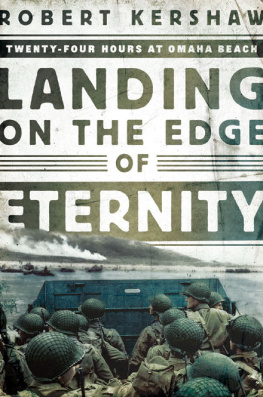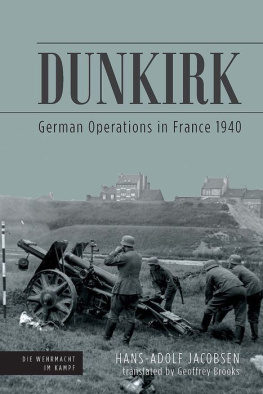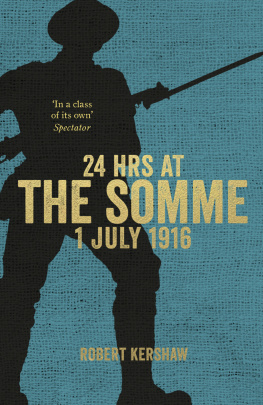Robert Kershaw - Dünkirchen 1940: The German View of Dunkirk
Here you can read online Robert Kershaw - Dünkirchen 1940: The German View of Dunkirk full text of the book (entire story) in english for free. Download pdf and epub, get meaning, cover and reviews about this ebook. year: 2022, publisher: Osprey Publishing, genre: Non-fiction. Description of the work, (preface) as well as reviews are available. Best literature library LitArk.com created for fans of good reading and offers a wide selection of genres:
Romance novel
Science fiction
Adventure
Detective
Science
History
Home and family
Prose
Art
Politics
Computer
Non-fiction
Religion
Business
Children
Humor
Choose a favorite category and find really read worthwhile books. Enjoy immersion in the world of imagination, feel the emotions of the characters or learn something new for yourself, make an fascinating discovery.
- Book:Dünkirchen 1940: The German View of Dunkirk
- Author:
- Publisher:Osprey Publishing
- Genre:
- Year:2022
- Rating:3 / 5
- Favourites:Add to favourites
- Your mark:
- 60
- 1
- 2
- 3
- 4
- 5
Dünkirchen 1940: The German View of Dunkirk: summary, description and annotation
We offer to read an annotation, description, summary or preface (depends on what the author of the book "Dünkirchen 1940: The German View of Dunkirk" wrote himself). If you haven't found the necessary information about the book — write in the comments, we will try to find it.
Dünkirchen 1940: The German View of Dunkirk — read online for free the complete book (whole text) full work
Below is the text of the book, divided by pages. System saving the place of the last page read, allows you to conveniently read the book "Dünkirchen 1940: The German View of Dunkirk" online for free, without having to search again every time where you left off. Put a bookmark, and you can go to the page where you finished reading at any time.
Font size:
Interval:
Bookmark:

DEDICATION
Dedicated to the Girls: Lynn, Chrissie, Jane and Shirley

Dunkerque, France
Eighty years after the Dunkirk evacuation, the plank walkway that was the East Mole no longer exists. There is a sign in bad English, supported by a photograph of British soldiers scrambling aboard a ship, to show where it once was. Two-thirds of the British Expeditionary Force (BEF) walked to safety along this fragile wooden platform, three abreast, but today there is simply a line of sea defence boulders next to a concrete walkway protruding into the harbour. Why couldnt the Luftwaffe collapse this flimsy wooden structure before? Off to the right is the seaside resort of Malo-les-Bains, with its crowds of holidaymakers relaxing on fine white sand with multi-coloured windbreaks and umbrellas. The backdrop is the sound of children playing, rising above the gentle surf. In May 1940 the French destroyer LAdroit languished in shallow water offshore, like a beached grey whale, her back broken by Stuka bombs. There is no evidence of war here today.
Looking east, the gently shelving white-sand beach stretches 17 miles into the distance, past the holiday resorts of Bray Dunes and De Panne in Belgium to Nieuport. On average 10,000 men per day queued here waiting to be picked up, despite being mercilessly bombed and machine gunned by the Luftwaffe. In total, an army three times the size of the present British Army passed across these beaches. Absolutely no trace of lorry piers covered with planking stretching out to sea or the abandoned vehicles, guns and military equipment remain. At especially low tide the dinosaur-like ribcage wrecks of the beached and bombed paddle steamers Crested Eagle and Devonia are still visible. The former now hosts a mussel farm. Behind the red-brick Zuydcoote maritime hospital nearby, where columns of British troops waded out into the surf to be picked up, is the Reserve Naturelle Dune Marchand. This nature reserve of 83 acres preserves the original dune landscape into which British and French soldiers burrowed to avoid air attack. Apart from shrapnel and machine gun scars on the brickwork in some back streets, there is nothing to differentiate this scene from a popular holiday resort.
I stand on the hill at Cassel, the only high ground for miles around, with Dunkirk in line of sight 18 miles to the north. The panorama before me exudes history. Off the coast at Gravelines by Dunkirk port, the Spanish Armada was engaged in a running fight in the summer of 1588 with the combined British fleets of Drake and Howard. On 15 June 1658 the Battle of the Dunes was fought just ahead, Dunkirk being under Spanish control in the morning, French by midday and British at the end of the afternoon. Indeed, Cassel was the hill where the Grand Old Duke of York marched up and down again with ten thousand during the French Revolutionary Wars. From my vantage point I can see virtually the whole of the Dunkirk perimeter as it was in May 1940, but there is little to suggest to the casual tourist that momentous events happened here. A huge black column of smoke boiled up from the burning refineries in 1940, a navigational guide for retreating British soldiers, aircraft from all sides and German infantry advancing on the port.
I was here to make sense of the plethora of documents I had amassed on the German view of Dunkirk. British narratives tend to be tinged with nostalgic patriotism, especially television documentaries. Few clues can be discerned from the landscape, except it is totally flat bordering the Dunkirk beaches, and there is an extensive canal and waterway system enclosing the former perimeter. At the back of my mind was the absence of fear within any British veteran accounts about Dunkirk that a panzer attack might reach the beaches. I knew about Hitlers Panzer Halt Order, and the prevailing opinion that, but for the stop, Dunkirk would have been captured before the BEF even got there. This forms part of the accepted Dunkirk myth. But contemporary German accounts reveal that, even before the halt was ordered, the French checked the lead panzer division in its tracks on the western outskirts of Dunkirk. My own military experience suggested the approaches to Dunkirk port, deliberately flooded, and herringboned with drainage ditches, were completely unsuited for armoured operations. The Dunkirk evacuation took nine days, but the panzers were held back for only one of those nine. What really happened during the four days when the core fighting divisions the seed corn of the future British army were evacuated?
Dunkerque in May 1940 was a town of 31,000 inhabitants crammed behind old city walls, which from the 19th century had been at the heart of an expanding urban conurbation of around 100,000 people. It was the third largest port in France and a steel and shipbuilding centre. It was a lot greyer then, French poet Henri Damaye describing Dunkirk as an austere town with forbidding streets, filled with commercial bustle.
There had been enormous relief in France when British Prime Minister Neville Chamberlain abandoned the Czechs and signed the Munich Agreement in the September of 1938. By early 1939, the grateful French felt they had dodged conflict and death at the last minute. War was, however, back on the agenda when the German Wehrmacht entered Prague. Danzig in Poland looked like it might be next, but the French did not seriously believe anyone would go to war over Danzig.
But crowds of Spanish Civil War refugees thronging southern France suggested democracy in Europe was indeed at risk. Rearmament and the arms race stepped up. An unprecedented military style parade on Bastille Day along the Champs-lyses was conducted to reassure the French people of their armys invincibility and give Germany pause for thought. Up to 45% of people interviewed that July anticipated a war in 1939 and 76% of them now felt force ought to be used against Germany if it attempted to seize the free city of Danzig. Hitlers shocking announcement of a non-aggression pact with the Soviet Union took the breath out of diplomatic safeguards that stood in the way of war, as well as engendering a sense of acute betrayal among the Left. Stalin had, at a blow, left Hitler free to attack Western Europe. On 31 August the First French Army reservists were called up.
Two days later Dunkerque railway station was congested with men leaving to rejoin units or steaming into the station to form up with the 310th and 73rd Infantry Regiments. There was no patriotic fervour like that of 1914. Grim expressionless faces peered out from trucks departing in streets watched by World War I widows, dressed once again in black. General mobilization was called when wireless reports announced the Germans had invaded Poland. On 3 September Britain declared war with Germany, and France later followed suit.
Nine months of the so-called drle de guerre or Phoney War followed. Dunkerques mayor, Alfred Dorp, drew up a list of 72 large cellars that could be converted into public air raid shelters. Public building walls were sandbagged for protection and private individuals strengthened their basement cellars and covered air vents to block out gas. Blackouts were instituted and street lighting converted to blue. Sirens wailed out at 5pm on the day war was declared but it was a false alarm. During the winter of 193940, 15 air raid warnings sounded, but none between January and 3 May, which encouraged a false sense of security. Thereafter sirens wailed each day when German
Next pageFont size:
Interval:
Bookmark:
Similar books «Dünkirchen 1940: The German View of Dunkirk»
Look at similar books to Dünkirchen 1940: The German View of Dunkirk. We have selected literature similar in name and meaning in the hope of providing readers with more options to find new, interesting, not yet read works.
Discussion, reviews of the book Dünkirchen 1940: The German View of Dunkirk and just readers' own opinions. Leave your comments, write what you think about the work, its meaning or the main characters. Specify what exactly you liked and what you didn't like, and why you think so.















